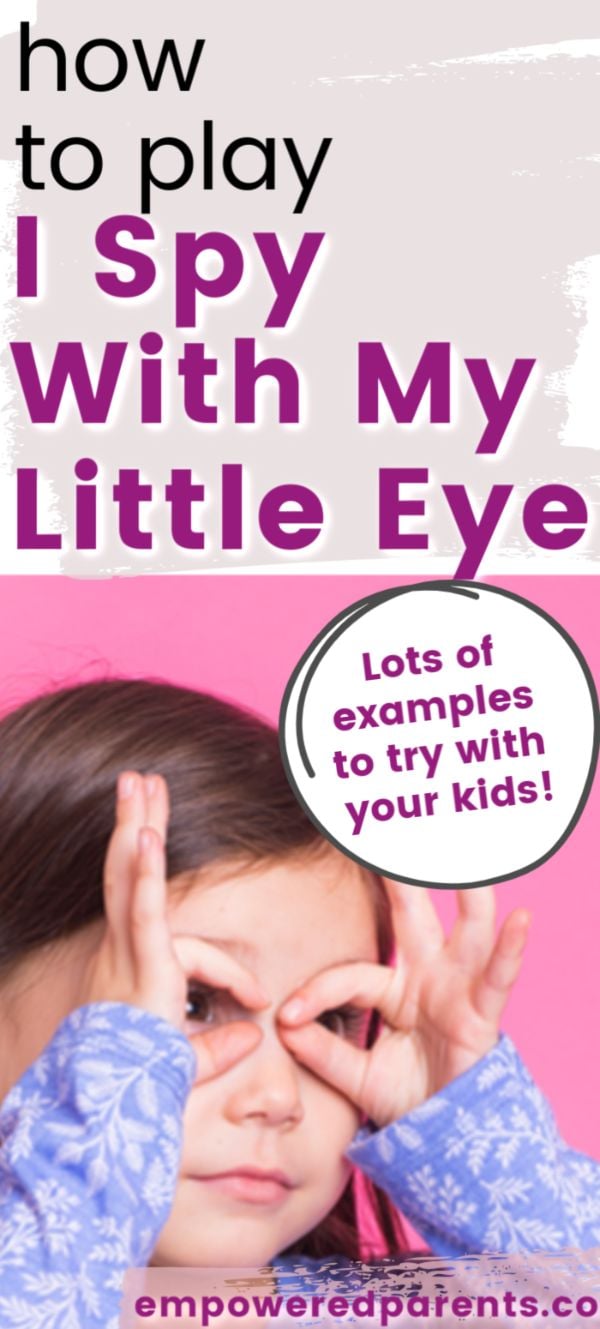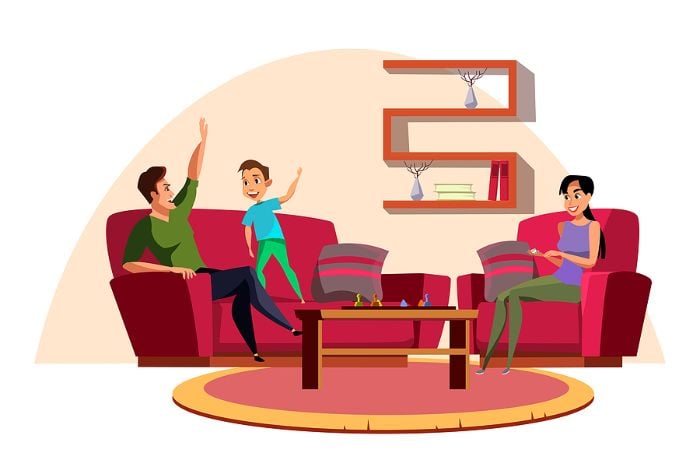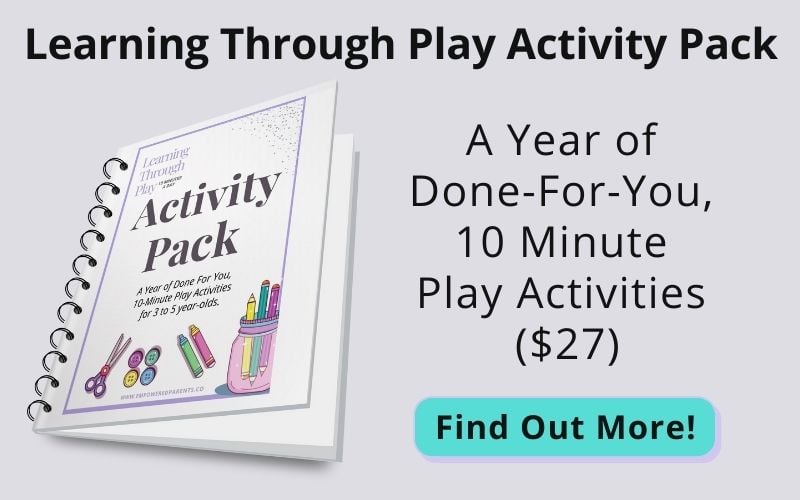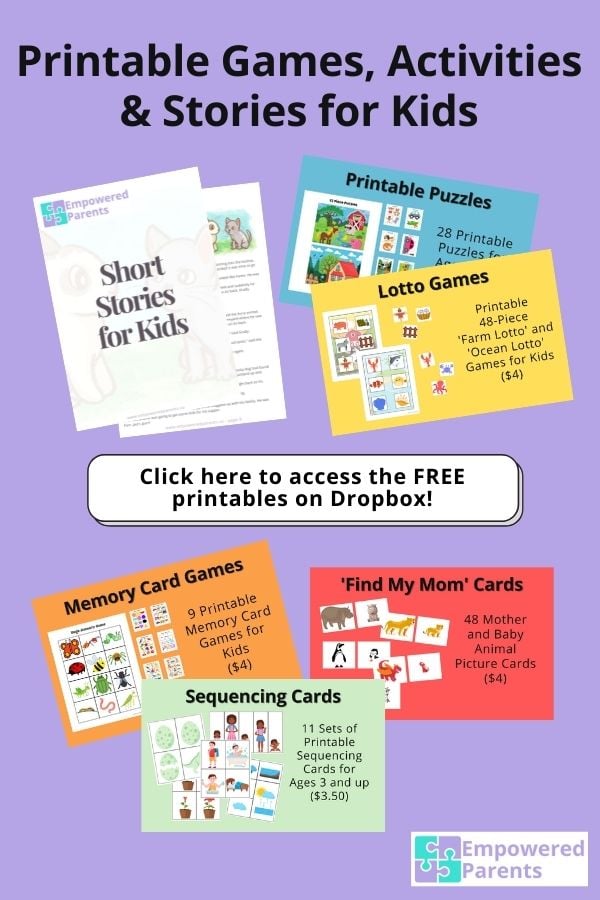Funny I Spy With My Little Eye

Did yous always play the "I Spy with my Little Middle" game as a child? This game is a favourite in homes and preschool classrooms, for good reason.
It's a great game to play to boost a kid's concentration, teach them to listen carefully and stimulate their thinking skills.
Y'all tin likewise utilize it to practise colours, shapes and even build sound awareness.
The best thing about the game is that information technology requires zippo prep and tin be played in v minutes, while preparing dinner or even while driving in the motorcar (automobile games are cracking for learning).
Read past the intro to discover 72 I Spy examples to go y'all started.

What does "I Spy" Mean?
The phrase "I spy" basically stands for, "I meet." The sentence opener, "I spy with my little eye," is peculiarly engaging for children considering of the rhyme.
Where Did "I Spy with My Middle" Come From?
The earliest mention plant of the I Spy game was from Victorian England and appeared in The Manchester Times of 1889. At that fourth dimension, play may have typically focused on the starting time letter of the objects' names.
How Exercise You Play "I Spy with My Little Heart"?
What are the rules of I Spy? Indoors or outside, an developed often begins the game. As the person selecting an object, you are sometimes chosen "The Spy."
You wait around the expanse and focus on an object within view of the other players.
One time you have chosen your object, say, "I spy with my niggling eye…," and then offer the first inkling. Some "spies" make a circular "spyglass" or monocle with the fingers of one hand, for fun viewing, or with 2 hands to imitate binoculars.

For immature children, you may want to look in the management of the object every bit a partial inkling. For older preschoolers, be conscientious not to expect right towards the commodity.
In one case an object is chosen and a clue given, it should not be inverse until after it has been guessed.
Your kid guesses co-ordinate to the clues you take given. Y'all answer "yes" or "no," equally to whether their guess is right. When more than one child is playing, they have turns guessing.
If you desire, you can also permit players ask "yes" or "no" questions, like, "Is information technology here in the living room?" or "Is it on my left?"
In addition, if players are having difficulty finding the answer, The Spy tin offer clues like "hot" and "cold," as to how close the players are coming to the correct answer.
The player who guesses correctly is the side by side ane to requite clues as The Spy for a unlike object.

72 "I Spy with My Footling Eye" game ideas
Here are some fun "I Spy with My Lilliputian Eye" game ideas. Y'all tin can work on dissimilar kinds of skills, depending on which ones you lot think would be near beneficial for your child.
As a bonus, all these options can help your kid practice listening skills.

I spy with my footling eye…
Examples to Build Beginning Audio Awareness
- something that begins with "due south-s-due south"
- something that starts similar "boo"
- something that begins with "t-t-t"
Examples to Build Catastrophe Sound Awareness
- something that ends similar "top"
- something that ends with "g-g-m"
- something with the aforementioned final sound every bit "sun"
Examples to Practise Visual Perception
- something red, brilliant, and shiny
- something straight, checked, and flat
- something round, big, and blue
Visual perception is an important skill for learning to read.
Examples to Develop Upper-case letter Letter Identification Skills
Older children can play I Spy to learn to recognize consonants and vowels.
- a upper-case letter "H"
- the upper-case letter consonant "Grand"
- the capital vowel "E"
Examples to Develop Lowercase Letter of the alphabet Identification Skills
- a lowercase alphabetic character "b"
- the lowercase consonant "f"
- the lowercase vowel "a"
Hither are more letter recognition games and activities.
Examples to Develop Number Identification Skills
- the number 5
- a number 9
- the number 10
Hither are some fun number recognition skills to help you build this skill.
Examples to Build Colour Identification Skills
- something green
- something pink and brown
- something light imperial
Examples to Practise Shape Identification Skills
- something shaped like a rectangle
- something with circles and diamonds
- something triangular
Examples to Develop Sensation for Signs of the Seasons
- something growing that shows our season is autumn
- a tool that shows information technology is autumn
- a decoration that shows our season is autumn
Examples to Build Retention (at least 3 characteristics)
- something fuzzy, white, and heavy
- something large, yellow, and electric
- something wooden, tan, and rectangular
Here are some memory games to play as well.

Examples to Practise Animal Identification
- a brown goat
- a polar carry
- a infant deer or fawn
Examples to Develop Spatial/Position Sensation
- something over/under the chiffonier
- something in front of/behind the sofa
- something that is high/low
Examples to Build Establish Identification Skills
- a yellow tulip
- a dark pink rose
- a tall pino tree
Examples to Do Part Thinking Skills
- something circular and metal that is used for cooking
- something flat and glass that we employ to see how we await
- something black and plastic that we use to communicate
Examples to Develop Audio Thinking Skills
- something that says "beep"
- something that makes a ringing noise
- something that gurgles
Examples to Practice Fruit/Vegetable Identification
- a long, yellow vegetable
- a green, sweetness fruit
- a round, orange fruit

Examples to Build Language Skills
- something that looks "transparent"
- something with the colours "crimson and lavender"
- something that smells "fragrant"
Examples to Develop Bear upon/Texture Grouping Skills
- something that feels bumpy
- something that is smooth
- something silky
Examples to Develop Smell Group Skills
- something that smells stinky
- something that would odor sweet
- something that smells minty
Examples to Practise Word Identification
These "I Spy with My Niggling Eye" ideas are also suitable for older children, or children who already recognize words in their environment.
- the word "go"
- the give-and-take "exit"
- the word "stop"
Examples to Build Rhyming Skills
- something that rhymes with "guzzle"
- a matter that rhymes with "vivid"
- something that rhymes with "about"
Examples to Develop Measurement Skills
- something that is about a centimetre long
- something that is effectually a metre tall
- something that holds about a litre
Examples to Do Sorting
- the fruit in the dish that is different from the residue
- a button in the jar that is different
- the toy in the tray that is different from the rest
Examples to Build Taste Differentiation Skills
- a nutrient that tastes salty
- something that would taste sour
- a food that tastes sweet
I hope you like these "I Spy with My Little Eye" examples.
Playing the part of The Spy may exist quite challenging for children in the beginning. They are certainly learning in either office.
You can come up with your ain categories to play the "I Spy my Little Centre" game with preschoolers, equally well, depending on your child'southward interests and on your environs.
Have fun!
Get instant access to FREE educational printables here. You'll receive puzzles, sequencing cards, 'find my mom' cards, retention games, lotto games and a pack of short stories.
Would you like a year of washed-for-y'all, x-minute activities to teach your 3-five-year-old through play? Get your copy of the Learning Through Play Activeness Pack for only $27.

Source: https://empoweredparents.co/i-spy-my-little-eye/

0 Response to "Funny I Spy With My Little Eye"
Postar um comentário